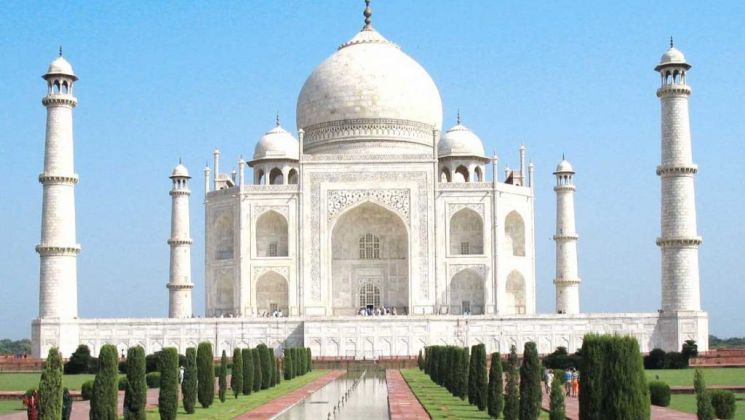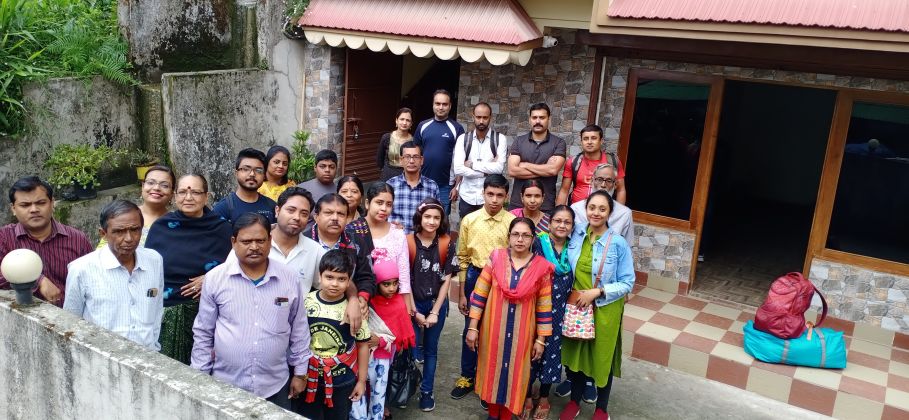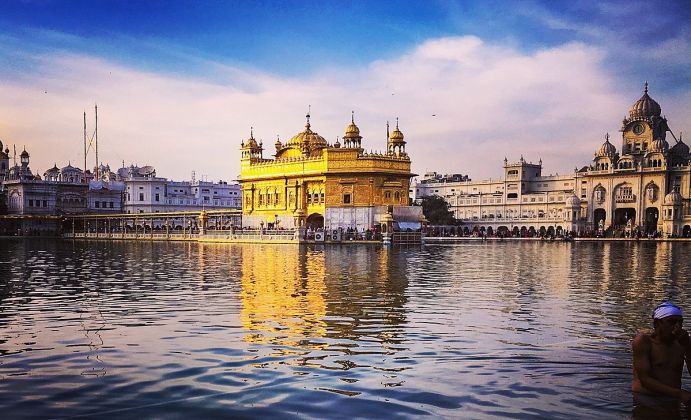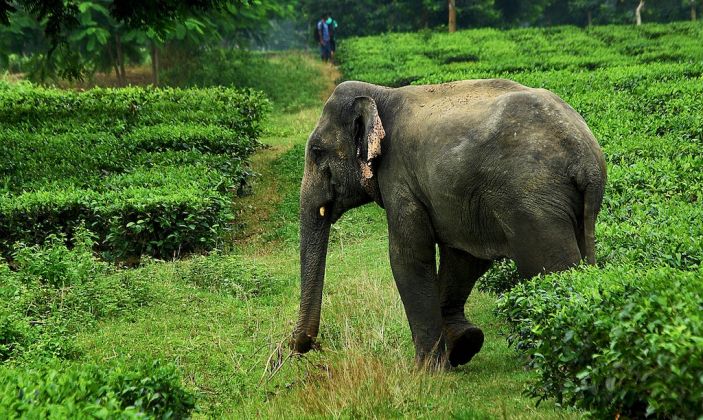- 10 Nights 11Days
- 1 Person
- 04/October/2021, 11/October/2021, 03/November/2021, 23/ December/2021, 21/November/2021
Lotus Temple , Akshardham Temple , India Gate , Agra Fort , Tajmahal , Haridwar , Hrisikesh , Mussoorie.
Delhi Agra Haridwar Tour Package Price :
Delhi Agra Haridwar Tour Package Includes
2. Type Of Vehicle Bus / Tata Sumo / Max / Maruti.
3.The Ticket Booking For Indian Railway Starts 120 Days In Advance. Therefore To Confirm Your Booking , Please Contact Us 4 Months Before Your Journey Date.
Delhi Agra Haridwar Tour Package Excludes
2. All Entry Fee
3. Guide Charge
4. Train Meal
5.Camera Charge
Delhi Agra Haridwar Tour Details
Lotus Temple:-
The Lotus Temple, located in Delhi, India, is a Baháʼí House of Worship that was dedicated in December 1986. Notable for its flowerlike shape, it has become a prominent attraction in the city. Like all Baháʼí Houses of Worship, the Lotus Temple is open to all, regardless of religion or any other qualification. The building is composed of 27 free-standing marble-clad "petals" arranged in clusters of three to form nine sides, with nine doors opening onto a central hall with a height of slightly over 34.27 metres and a capacity of 2,500 people. The Lotus Temple has won numerous architectural awards and has been featured in many newspaper and magazine articles. A 2001 CNN report referred to it as the most visited building in the world.
All Baháʼí Houses of Worship, including the Lotus Temple, share certain architectural elements, some of which are specified by Baháʼí scripture. Ê»Abdu'l-Bahá, the son of the founder of the religion, stipulated that an essential architectural character of a House of Worship is a nine-sided circular shape. While all current Baháʼí Houses of Worship have a dome, this is not regarded as an essential part of their architecture. Baháʼí scripture also states that no pictures, statues or images be displayed within the House of Worship and no pulpits or altars be incorporated as an architectural feature (readers may stand behind simple portable lecture stands).
Model of the temple at the information centre
Inspired by the lotus flower, the design for the House of Worship in New Delhi is composed of 27 free-standing marble-clad "petals" arranged in clusters of three to form nine sides. The nine doors of the Lotus Temple open onto a central hall slightly more than 40 metres tall that can seat 1,300 people and hold up to 2,500 in all. The surface of the House of Worship is made of white marble from Penteli mountain in Greece, the same marble used in the construction of many ancient monuments (including the Parthenon) and other Baháʼí buildings. Along with its nine surrounding ponds and gardens, the Lotus Temple property comprises 26 acres (105,000 m²; 10.5 ha).
Lotus temple is situated near Okhla NSIC and Kalkaji Mandir metro station is just 500 meters away.
The temple is located in the village of Bahapur in New Delhi, National Capital Territory of Delhi. The architect was an Iranian, Fariborz Sahba who now lives in La Jolla, California, after living some years in Canada. He was approached in 1976 to design the Lotus Temple and later oversaw its construction. The structural design was undertaken by the UK firm Flint and Neill over the course of 18 months, and the construction was done by ECC Construction Group of Larsen & Toubro Limited at a cost of $10 million. The major part of the funds needed to buy this land was donated by Ardishír Rustampúr of Hyderabad, Sindh, who gave his entire life savings for this purpose in 1953. A portion of the construction budget was saved and used to build a greenhouse to study indigenous plants and flowers that would be appropriate for use on the site.
Of the temple's total electricity use of 500 kilowatts (kW), 120 kW is provided by solar power generated by solar panels on the building. This saves the temple 120,000 rupees per month.It is the first temple in Delhi to use solar power.
Akshardham Temple:-
'Akshardham' means the divine abode of God. It is hailed as an eternal place of devotion, purity and peace. Swaminarayan Akshardham at New Delhi is a Mandir – an abode of God, a Hindu house of worship, and a spiritual and cultural campus dedicated to devotion, learning and harmony. Timeless Hindu spiritual messages, vibrant devotional traditions and ancient architecture all are echoed in its art and architecture.The mandir is a humble tribute to Bhagwan Swaminarayan (1781- 1830), the avatars, devas and great sages of Hinduism. The traditionally-styled complex was inaugurated on 6 November 2005 with the blessings of HH Pramukh Swami Maharaj and through the devoted efforts of skilled artisans and volunteers.Each element of Akshardham echoes with spirituality – the Mandir, the Exhibitions and even the Gardens.
The Akshardham mandir has over two hundred murtis, representing many of the spiritual stalwarts over many millennia. The spiritual premise of Akshardham is that each soul is potentially divine. Whether we are serving the family, the country our neighbors or all living beings the world over , each service can help one move towards divinity. Each prayer is a call towards improving oneself and moving closer to God.
A visit to Akshardham is a spiritually enriching experience. Whether it is in realising the power of prayer, in feeling the strength of non-violence, in being aware of the universal nature of Hinduism’s ancient principles, or just in admiring the beauty of God’s abode on Earth –- each element has a spiritual significance.
India Gate:-
The India Gate (originally the All India War Memorial) is a war memorial located astride the Rajpath, on the eastern edge of the "ceremonial axis" of New Delhi, formerly called Kingsway. It stands as a memorial to 70,000 soldiers of the British Indian Army who died in between 1914–1921 in the First World War, in France, Flanders, Mesopotamia, Persia, East Africa, Gallipoli and elsewhere in the Near and the Far East, and the third Anglo-Afghan War. 13,300 servicemen's names, including some soldiers and officers from the United Kingdom, are inscribed on the gate.[2] Designed by Sir Edwin Lutyens, the gate evokes the architectural style of the triumphal arch such as the Arch of Constantine, in Rome, and is often compared to the Arc de Triomphe in Paris, and the Gateway of India in Mumbai.
Following the Bangladesh Liberation war in 1972, a structure consisting of a black marble plinth with a reversed rifle, capped by a war helmet and bounded by four eternal flames, was built beneath the archway. This structure, called Amar Jawan Jyoti (Flame of the Immortal Soldier), has since 1971 served as India's tomb of the unknown soldier. India Gate is counted amongst the largest war memorials in India and every Republic Day, the Prime Minister visits the gate to pay their tributes to the Amar Jawan Jyoti, following which the Republic Day parade starts. The memorial-gate is also a popular spot for protests by the civil society in New Delhi.
Agra Fort:-
Agra Fort is a historical fort in the city of Agra in India. It was the main residence of the emperors of the Mughal Dynasty until 1638, when the capital was shifted from Agra to Delhi. Before capture by the British, the last Indian rulers to have occupied it were the Marathas. In 1983, the Agra fort was inscribed as a UNESCO World Heritage site. It is about 2.5 km northwest of its more famous sister monument, the Taj Mahal. The fort can be more accurately described as a walled city.
It had been used by the early mughal rulers. The Fort stands on an ancient site and was traditionally known as Badalgarh. It was captured by Ghaznavi for some time but in the 15th century A.D. the Chauhan Rajputs occupied it. Soon after, Agra assumed the status of capital when Sikandar Lodi (A.D. 1487-1517) shifted his capital from Delhi and constructed a few buildings in the pre-existing Fort at Agra. After the first battle of Panipat (A.D. 1526) Mughals captured the fort and ruled from it. In A.D. 1530, Humayun was crowned in it. The Fort got its present appearance during the reign of Akbar (A.D. 1556-1605).
Tajmahal:-
The Taj Mahal .?Crown of the Palace, is an ivory-white marble mausoleum on the south bank of the Yamuna river in the Indian city of Agra. It was commissioned in 1632 by the Mughal emperor Shah Jahan (reigned from 1628 to 1658) to house the tomb of his favourite wife, Mumtaz Mahal; it also houses the tomb of Shah Jahan himself. The tomb is the centrepiece of a 17-hectare (42-acre) complex, which includes a mosque and a guest house, and is set in formal gardens bounded on three sides by a crenellated wall.
Construction of the mausoleum was essentially completed in 1643, but work continued on other phases of the project for another 10 years. The Taj Mahal complex is believed to have been completed in its entirety in 1653 at a cost estimated at the time to be around 32 million rupees, which in 2015 would be approximately 52.8 billion rupees (U.S. $827 million). The construction project employed some 20,000 artisans under the guidance of a board of architects led by the court architect to the emperor, Ustad Ahmad Lahauri.
The Taj Mahal was designated as a UNESCO World Heritage Site in 1983 for being "the jewel of Muslim art in India and one of the universally admired masterpieces of the world's heritage". It is regarded by many as the best example of Mughal architecture and a symbol of India's rich history. The Taj Mahal attracts 7–8 million visitors a year and in 2007, it was declared a winner of the New7Wonders of the World (2000–2007) initiative.
Haridwar:-
Haridwar (local pronunciation (help·info), also spelled Hardwar, is a city and municipality in the Haridwar district of Uttarakhand, India. With a population of 228,832 in 2011, it is the second largest city in the state and the largest in the district.
The city is situated on the right bank of the Ganga river, at the foothills of the Shivalik ranges.
Haridwar is regarded as a holy place for Hindus, hosting important religious events and serving as a gateway to several prominent places of worship.
Most significant of the events is the Kumbha Mela, which is celebrated every 12 years in Haridwar. During the Haridwar Kumbh Mela, millions of pilgrims, devotees, and tourists congregate in Haridwar to perform ritualistic bathing on the banks of the river Ganges to wash away their sins to attain Moksha.
According to the Samudra manthan, Haridwar along with Ujjain, Nashik and Prayagraj (Allahabad) is one of four sites where drops of Amrit, the elixir of immortality, accidentally spilled over from the pitcher while being carried by the celestial bird Garuda. Brahma Kund, the spot where the Amrit fell, is located at Har ki Pauri (literally, "footsteps of the Lord") and is considered to be the most sacred ghat of Haridwar. It is also the primary center of the Kanwar pilgrimage, in which millions of participants gather sacred water from the Ganga and carry it across hundreds of miles to dispense as offerings in Åšiva shrines.
Today, the city is developing beyond its religious importance, with the fast developing industrial estate of State Industrial Development Corporation of Uttarakhand (SIDCUL), and the close by township of Bharat Heavy Electricals Limited as well as its affiliated ancillaries.
Haridwar presents a kaleidoscope of Indian culture and development. In the sacred writings it has been differently specified as Kapilsthan, Gangadwar and Mayapuri. It is additionally a passage for the chota Char Dham (the four principle pilgrim destinations in Uttarakhand viz, Badrinath, Kedarnath, Gangotri, and Yamunotri), subsequently, Shaivaites (adherents of Lord Shiva) and Vaishnavites (devotees of Lord Vishnu) call this place Hardwar and Haridwar individually, relating to Har being Shiv and Hari being Vishnu.
Hrishikesh:-
Rishikesh, also known as Hrishikesh, is a city governed by Rishikesh Municipal Corporation (since October 2017), and a tehsil in Dehradun district of the Indian state Uttarakhand. Located in the foothills of the Himalayas in northern India, it is known as the "Gateway to the Garhwal Himalayas" and "Yoga Capital of the World". It lies approximately 25 km (16 mi) north of the city Haridwar and 43 km (27 mi) southeast of the state capital Dehradun. According to Census of India, 2011 Rishikesh had a population of 102,138 making it the seventh most populated city in the state of Uttarakhand. It is known as the pilgrimage town and regarded as one of the holiest places to Hindus. Hindu sages and saints have visited Rishikesh since ancient times to meditate in search of higher knowledge.
In September 2015, the Union tourism minister Mahesh Sharma announced that Rishikesh and Haridwar will be the first in India to be given the title of "twin national heritage cities". Due to the religious significance of the place, non-vegetarian food and alcohol are strictly prohibited in Rishikesh. The city has hosted the annual International Yoga Festival on the first week of March since 1989.
Mussoorie:-
Mussoorie is a hill station and a municipal board in the Dehradun District of the Indian state of Uttarakhand. It is about 35 kilometres (22 mi) from the state capital of Dehradun and 290 km (180 mi) north of the national capital of New Delhi. The hill station is in the foothills of the Garhwal Himalayan range. The adjoining town of Landour, which includes a military cantonment, is considered part of 'greater Mussoorie', as are the townships of Barlowganj and Jharipani. The pin code for Mussoorie is 248179.
Mussoorie is at an average altitude of 2,005 metres (6,578 ft). To the northeast are the Himalayan snow ranges, and to the south, the Doon Valley and Shiwalik ranges. The second highest point is the original Lal Tibba in Landour, with a height of over 2,275 metres (7,464 ft). Mussoorie is popularly known as The Queen of the Hills.









